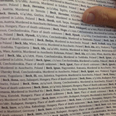
Auschwitz: Art in name of memory
Exhibition presenting Holocaust from several aspects to be inaugurated Thursday in Block 27 of Nazi death camp in Poland. Exhibits include mosaic based on drawings of murdered children, pictures of survivors who managed to rebuild their lives
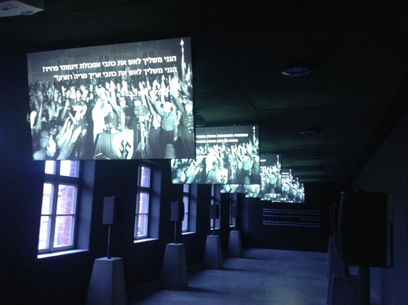
Exhibition revamped after years of neglect (Photo: Eldad Beck, Yedioth Ahronoth)
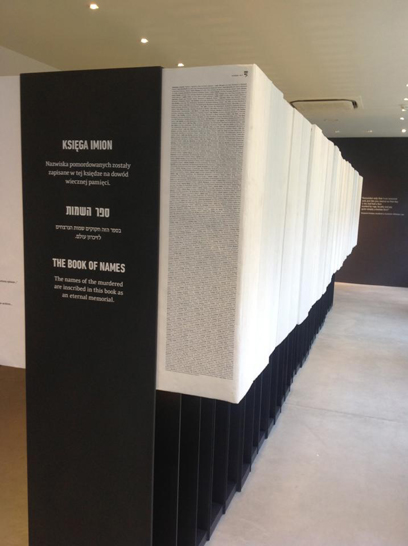
Book of 4.2 million names (Photo: Eldad Beck, Yedioth Ahronoth)
In 1978, the Polish authorities decided to turn Block 27 in Auschwitz into an exhibition dedicated to the Jewish victims of the death and concentration camp. Although one million of the 1.2 million people murdered in the camp were Jewish, its communist liberators concealed that painful fact and the exhibition referred to all the murdered as victims of Fascism.
The exhibit first dedicated to the Jews was not fully backed by the authorities, as they saw most of those murdered at Auschwitz as Poles, and the place was seriously neglected for decades and some of the exhibits were stolen.
In 2005, then-Prime Minister Ariel Sharon visited the place. Shocked by what he saw, he decided to revamp the permanent exhibition on the premises. The plan's execution was inherited by Prime Minister Ehud Olmert, who tasked Yad Vashem with the mission.
"I was seriously tormented when we were given the mission," admits Yad Vashem Chairman Avner Shalev. "We wanted to do something that would not be similar to things that already exists. In spite of the pressure, I felt that if we only present historical things in the exhibition, we'll be missing out on something.
"A total of 1.4 million people visited Auschwitz last year, and only few of them arrived at the pavilions of the exhibit, which is not part of the general exhibition. We wanted the exhibition to be included in the route and decided to establish an exhibition which would allow a short visit, convey strong and to-the-point messages, and make an impression, especially on young visitors."
Trying to convey a clear message
The final result is very impressive. The exhibition does not only deal with the systematic murder that took place in Auschwitz, but in the entire scope of the Holocaust.
"Visitors will be exposed to each of the different components of the Holocaust," explains Shalev. "The message must be clear, especially now that the uniqueness of the Holocaust is being denied or that people are trying to break it into different stages of murder in order to justify claims that the Holocaust was not so special.
"We hope the young people come out of here with a better understanding of the Jewish people's situation, especially at a time when anti-Semitism is raising its head again and is seething below the surface in Europe. Parties in Hungary, Greece and Ukraine are saying publicly today when the Nazis said in the past: 'Jews are to blame for everything.'"
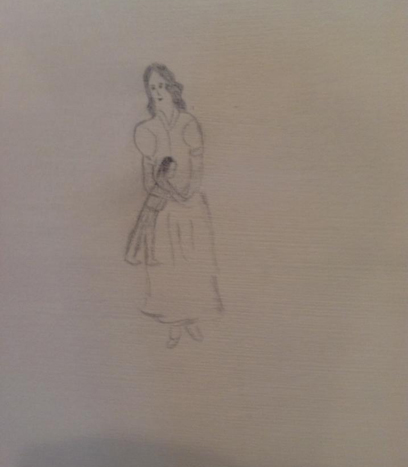
One of drawings in Rovner's exhibition (Photo: Eldad Beck, Yedioth Ahronoth)
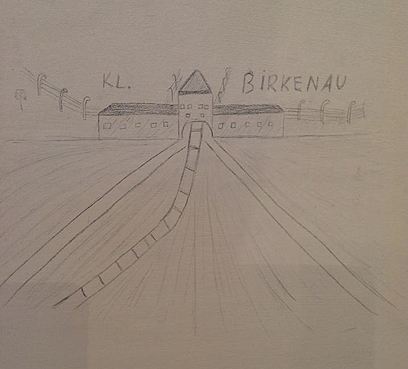
Death camp in the eyes of a child (Photo: Eldad Beck, Yedioth Ahronoth)
One of the wings in the block is dedicated to the work of international Israeli artist Michal Rovner, who chose to call her exhibition "Traces of Life," presenting a mosaic made from the paintings of 9,000 children, most of whom died in the Holocaust.
"A total of 1.5 million children, which is today the number of all children in Israel, died in the Holocaust," she says with a shiver. "It's hard to even imagine the dreadfulness of this murder."
Rovner's section in the exhibition attempts to tell the story of the Holocaust in a plain manner, through the eyes and simple and naïve drawing language of children from all over Europe, who were uprooted from their homes and sent to the death camps. Replications of the drawings, mostly in pencil, were perpetuated on large white walls on the second floor of Block 27.
"My intention was to try to get closer to the children wiped from this world, while conveying a sense of absence," she says. "The lines I copied are those of the children. Every time I drew, those children got to draw again through me, and that way I gave them presence in a place which wanted to make them disappear."
Wing for each topic, Book of Names
The illuminated entrance hall, which has a short and purposeful definition of the term "Shoah" engraved on each of its walls, leads to a dark corridor with a video installation by artist Hagit Shimoni. The visitor sees the words “Ani Ma’amin” (“I believe”), Maimonides' version of the Jewish principles of faith, while listening to the prayer sung by a choir of children in the background.
The corridor leads to a room with films and photos documenting the lives of Jews – communities and individuals – in Europe and North Africa between the two world wars, in a bid to present visitors with the diversity and normalcy of Jewish life before the Holocaust.
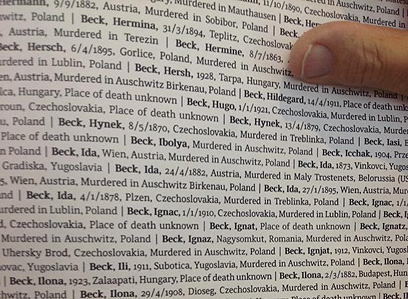
Book of Names from the inside (Photo: Eldad Beck, Yedioth Ahronoth)
Another hall is dedicated to the anti-Semitic Nazi ideology. Visitors are exposed to archive Nazi films, projected on large screens, with the authentic voices of senior members of the Nazi party coming from all directions, specifying the principles of their anti-Jewish beliefs.
The documentation clarifies the complete anti-Semitic nature of the Nazi racial theory and its inevitable result: The physical extermination of the European Jewry.
In the next hall, called "Geography of Terror," visitors are exposed to a map of the Germans' main murder sites across occupied Europe, as well as to short clips and photographs documenting the different methods of murder.
The next room presents testimonies of victims and survivors, who discuss the ways that allowed them to deal with the dreadfulness of the Holocaust and maintain their humanity.
After viewing the "Traces of Life" hall, visitors come upon a huge book containing the names of 4.2 Holocaust victims and their personal details. Its last pages remain empty for names which have yet to be located.
The last exhibit in the pavilion is dedicated to Holocaust survivors, presenting an endless loop of pictures of the families of those who survived the Holocaust and rebuilt their lives, most of them in Israel.










